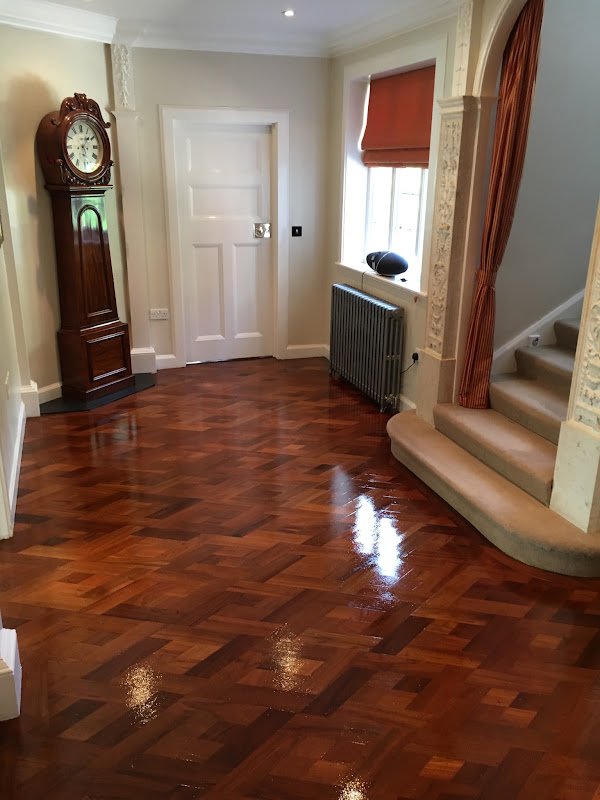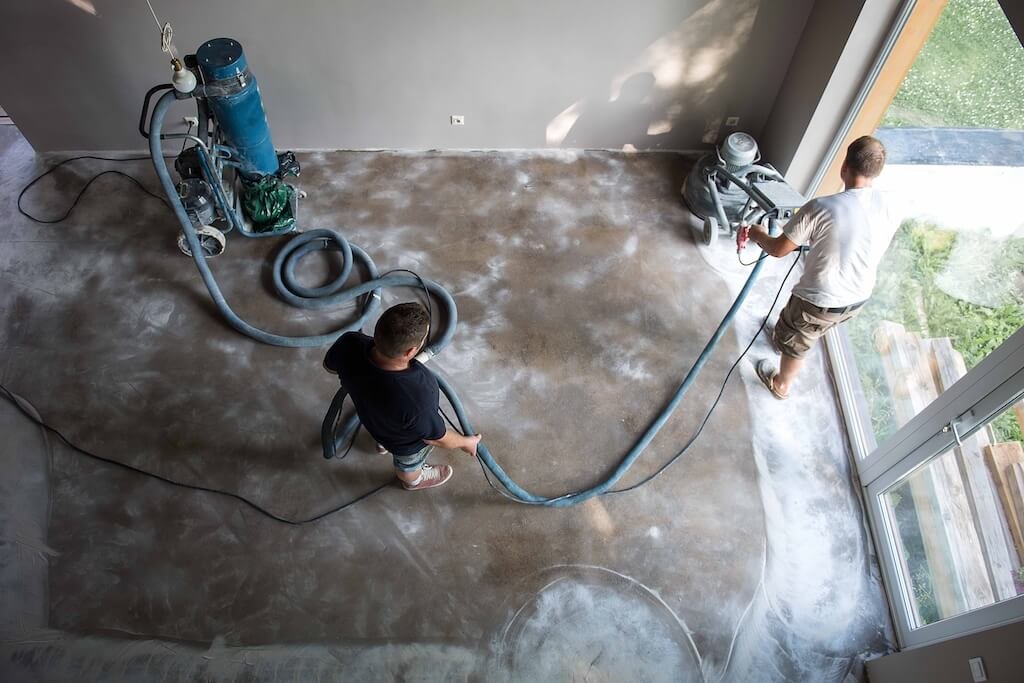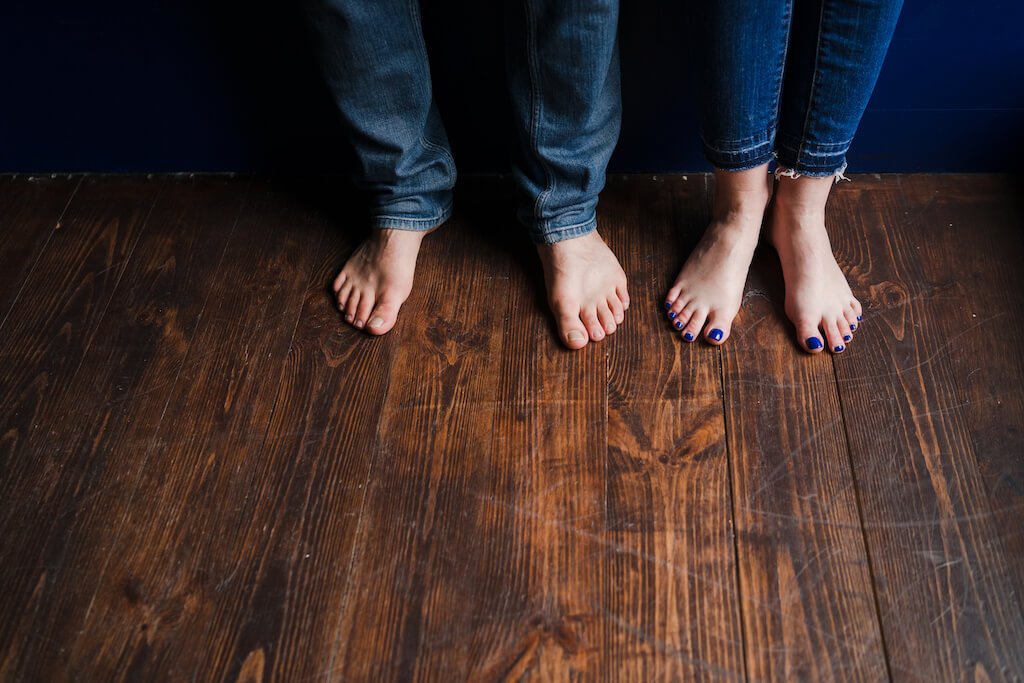

When it comes to crafting the perfect living or working space, the flooring you choose can be a defining element. Among the many many options available, wood flooring stands out not only for its natural warmth and timelessness but also for its transformative power in optimising space. In this detailed exploration, we will delve into five strategic choices within the realm of wood flooring, providing an in-depth understanding of how each can be harnessed for maximum impact.
1. Embrace Lighter Wood Tones:
The fundamental principle behind creating an illusion of space is rooted in the play of light. Opting for lighter wood tones, such as ash, maple, or light oak, is a powerful strategy to open up your space visually. Light hues not only reflect natural light but also bounce it around the room, creating a brighter and airier atmosphere.
The versatility of lighter wood serves as an excellent canvas for a variety of interior design styles. Whether you prefer a minimalist aesthetic or a vibrant, eclectic mix of furnishings, the neutral backdrop provided by lighter wood tones allows for endless possibilities. Additionally, these hues seamlessly integrate with various colour palettes, enabling you to experiment with different décor elements.
2. Utilise Wide Plank Flooring:
The width of wood planks plays a crucial role in influencing the perception of space. Wide plank flooring, characterised by planks exceeding the standard width, offers a solution that goes beyond mere aesthetics. The larger surface area of these planks reduces the number of visible seams, creating a more seamless visual flow throughout the space. With forever advancing technology wooden flooring is now able to flow through much larger areas without the need for thresholds. In certain cases as much as 250m areas without any expansion joints.
This choice is particularly effective in open-concept layouts, where continuity is key. The absence of dividers allows the eye to travel freely, making the space appear more expansive. Beyond the visual impact, wide plank flooring showcases the natural beauty of the wood, adding an extra layer of elegance to your surroundings. With widths ranging from 90mm all the way to 500mm there mis most certainly an option available to everyone.
3. Choose Engineered Wood for Stability:
In spaces where environmental factors pose challenges to traditional solid hardwood, engineered wood emerges as a strategic choice. Engineered wood consists of multiple layers, typically plywood or high-density fiberboard, topped with a hardwood veneer. This construction method provides enhanced stability, making it less susceptible to temperature and humidity fluctuations.
The practicality of engineered wood allows for its installation in areas traditionally off-limits for solid hardwood, such as basements or kitchens. This strategic choice not only expands the possibilities for wood flooring but also ensures a cohesive design throughout your entire living or working space.
Engineered wood can be supplied with a wear layer of up to 6mm to allow for extra longevity in that the floor can be professionally refinished time and time again to allow you to get the absolute maximum life span out of your floor.
4. Create Visual Interest with Herringbone or Chevron Patterns:
For those seeking a touch of sophistication and visual intrigue, intricate wood flooring patterns such as herringbone or chevron can be transformative. These angular arrangements of planks draw the eye along elongated lines, creating an illusion of depth and expansiveness.
While herringbone and chevron patterns are often associated with formal settings like dining rooms or entryways, their adaptability makes them suitable for various spaces. The timeless charm they impart adds a layer of sophistication that enhances the overall perception of roominess.
Many more widths and lengths are now available to allow a more modern and free flowing visual perception to be achieved.
5. Use Light-Colored Wood with Dark Accents:
The strategic interplay between light and dark elements within a space can be a game-changer. Pairing light-coloured wood flooring with darker accents, such as furniture or cabinetry, not only adds a touch of drama but also serves a practical purpose.
Dark accents create focal points within the room, preventing it from feeling overly monotonous. This careful balance between light and dark elements allows for the creation of well-defined zones within a larger space, contributing to a sense of purpose and curated design.
In conclusion, the selection of wood flooring is a nuanced process that extends beyond the aesthetic realm. By embracing lighter tones, experimenting with plank width, choosing engineered wood for practicality, incorporating intricate patterns, and playing with contrasting colours, you can strategically enhance the perceived size and elegance of your space. These choices not only reflect your personal style but also contribute to a harmonious and welcoming environment that stands the test of time. As you embark on your flooring journey, consider these strategic choices as tools in crafting a space that not only looks good but feels expansive and inviting.
FAQs
What are the different shapes of wood flooring?
Wood flooring comes in various shapes to suit different design preferences. Some common shapes include:
– Planks: Plank-shaped wood flooring is the most traditional and popular option. Planks are rectangular in shape and come in different widths and lengths.
– Parquet: Parquet flooring consists of small wooden pieces arranged in geometric patterns, creating a unique and intricate look.
– Herringbone: Herringbone flooring features rectangular planks arranged in a zigzag pattern, creating a visually appealing and timeless design.
– Chevron: Chevron flooring is similar to herringbone but with a more pronounced V-shaped pattern. It adds a stylish and dynamic element to the floor.
– Hexagon: Hexagon-shaped wood flooring is a modern and trendy option. The hexagonal shape creates a visually interesting pattern when installed.
What are the different colours of wood flooring?
Wood flooring is available in various colours to suit different design styles and preferences. Some common colours include:
– Natural: Natural wood flooring maintains the original colour and grain of the wood, showcasing its natural beauty.
– Light: Light-coloured wood flooring, such as blonde or whitewashed finishes, creates a bright and airy look, ideal for contemporary and Scandinavian designs.
– Medium: Medium-toned wood flooring, such as oak or walnut, offers a balance between light and dark, adding warmth and richness to the space.
– Dark: Dark-coloured wood flooring, such as mahogany or espresso finishes, creates a luxurious and dramatic look, suitable for traditional or formal designs.
– Gray: Gray-toned wood flooring has gained popularity for its modern and versatile appeal. It adds a cool and contemporary touch to the space.
Can I mix different shapes and colours of wood flooring?
Yes, mixing different shapes and colours of wood flooring can create a unique and visually appealing design. It allows for creative patterns and contrasts within the space. For example, combining herringbone or chevron patterns with plank-shaped flooring can add interest and depth to the floor. Mixing different colours can create a dynamic and eclectic look. However, it is important to ensure that the overall design remains cohesive and harmonious.
How do I choose the right shape and colour of wood flooring for my space?
Choosing the right shape and colour of wood flooring depends on various factors, including the style of your home, the existing decor, the amount of natural light, and personal preferences. Consider the overall aesthetic you want to achieve and how the flooring will complement the space. Lighter colours can make a room feel more spacious, while darker colours add warmth and richness. Different shapes can create different visual effects, so consider the size and layout of the room when making your decision.
Can the shape and colour of wood flooring impact the perceived size of a room?
Yes, the shape and colour of wood flooring can impact the perceived size of a room. Light-coloured flooring and smaller shapes, such as parquet or hexagon, can make a room appear larger and more open. Darker-coloured flooring and larger shapes, such as wide planks or chevron, can make a room feel cosier and more intimate. It is important to consider the size and proportions of the room when selecting the shape and colour of the flooring to achieve the desired effect.
.


